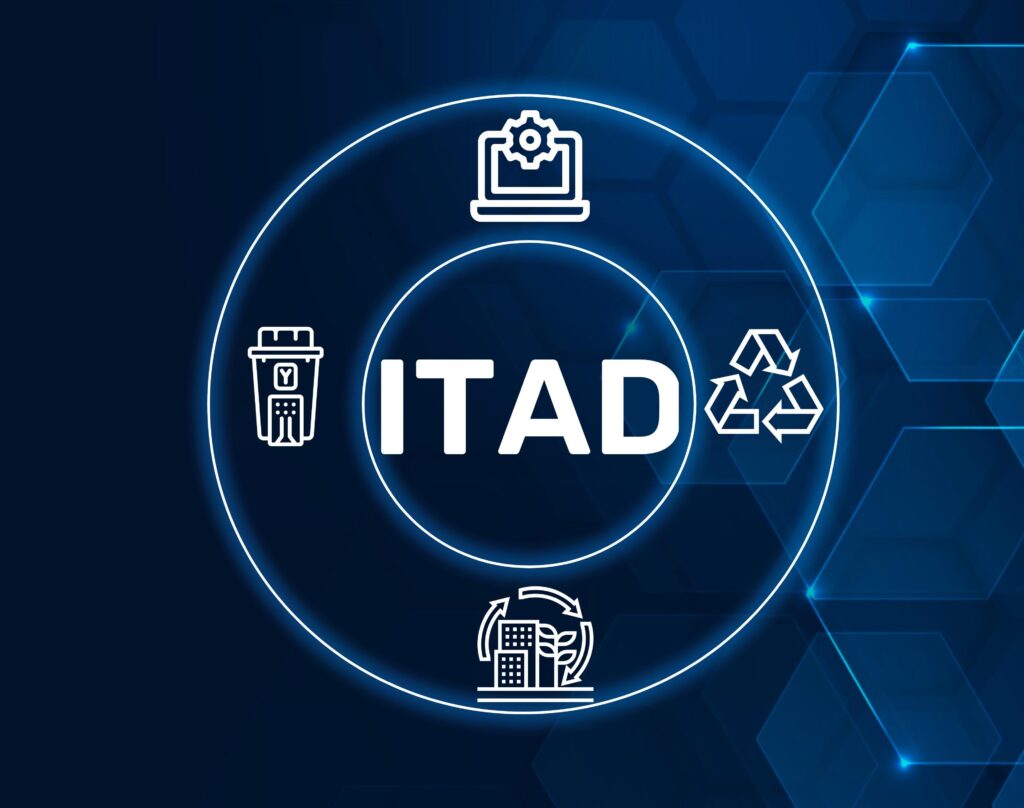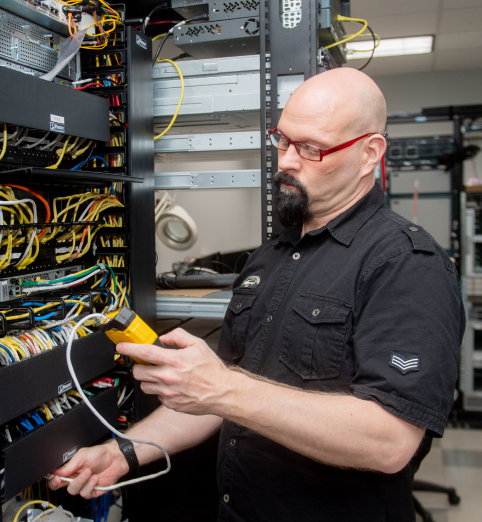An ITAD Playbook for AI Infrastructure Refresh Cycles
AI infrastructure is accelerating. Teams that deployed NVIDIA H100s last year are already upgrading to H200s. In high-performance computing environments, hardware refresh cycles now happen in 3 to 5 years, not decades.
For IT and data center teams managing AI workloads, this pace creates a new challenge: how do you retire expensive GPU servers without wasting money or risking a data leak?
That’s where IT asset disposition (ITAD) comes in. When handled right, it helps you recover value from decommissioned gear, protect sensitive data, and stay compliant, all while preparing your environment for the next wave of AI infrastructure.
In this guide, we’ll walk you through how to integrate ITAD into your refresh strategy, so you can unlock resale value, avoid compliance risks, and simplify decommissioning from start to finish.
What Is ITAD and Why AI Infrastructure Teams Should Care
ITAD, or IT Asset Disposition, is the process of removing old hardware in a way that protects data and helps optimize infrastructure across your AI data center. This includes wiping all data, deciding what can be reused or resold, and ensuring the rest is disposed of securely and in full compliance.
ITAD has a clear purpose:
- Protect data by wiping every drive or chip
- Recover money by reselling working parts like high-performance computing GPUs
- Avoid legal issues by following proper rules for disposal
- Keep a record of what was removed and where it went.
This matters for AI teams because their servers use high-value GPUs like H100s or A100s. These chips are often still in demand when the company upgrades. But if they are left sitting in racks, moved without tracking, or wiped incorrectly, two things can happen:
- The resale value drops or disappears
- Data from past models or customer info can leak
Risks of Ignoring ITAD in AI Server Decommissioning

If you leave ITAD out of your refresh plan, you risk losing value, exposing data, and failing compliance checks.
Here is what that can look like:
- You lose resale value. As newer AI chips like NVIDIA’s Blackwell hit the market, older GPUs such as Hopper models lose value quickly. Companies like CoreWeave have already seen asset depreciation impact their bottom line. Major cloud providers are also shortening hardware lifecycles. AWS recently reduced server lifespan to five years. Businesses risk missing the prime resale window when their AI infrastructure holds peak market value and can help offset the cost of an upgrade.
- Your data may leak. In 2024, federal records showed that 2 out of every 100 health data breaches came from poor disposal. If your team skips proper wiping, training data or credentials can leave the rack and reach the wrong hands.
- You may face fines. In 2023, Kaiser paid 49 million dollars after investigators found patient records and electronic waste in unsecured trash. That breakdown started with a lack of process. Without proof of wiping or tracking, your team may face audit failures under frameworks like HIPAA, SOX, or internal governance reviews.
If you manage AI infrastructure, your hardware carries both market value and sensitive data. And without a clear process in place before decommissioning begins, you lose control of both.
The 5-Step ITAD Plan for Decommissioning AI Hardware
If you’re managing an AI hardware refresh, here is a step-by-step way to plan ITAD so your team can stay in control.
Audit and Inventory for Full Asset and Data Visibility
Start by creating a detailed list of every asset that will be removed. This should include servers and individual components like GPUs, CPUs, storage drives, and racks.
Map where data exists across the system. Some GPUs may still contain model checkpoints, and many drives will store logs, configs, or user activity.
Identifying these points early helps your team understand exactly what needs to be wiped, what might hold resale value, what requires special handling, and how to support sustainable IT practices throughout the process.
Secure Data Sanitization for Audit-Ready Decommissioning
AI servers carry logs, models, and credentials across multiple drives. If this data leaves your site without being wiped, your team risks exposure under data privacy and security rules.
To stay in control, data must be erased and wiped. This is not the same as deleting files or resetting the system.
If your team is using a partner, the ITAD company should give you a certificate of erasure for each device. This confirms the wipe meets compliance standards and is required for audits under policies like HIPAA, SOX, and GDPR.
Decide What to Resell and What to Retire
Let’s say your team is retiring a batch of A100 servers. Some may still be in working condition and can be resold. Others, with hardware faults or unsupported firmware, may need to be recycled through a certified provider.
To avoid confusion during decommissioning, your team should agree on three things in advance:
- What qualifies for resale
- What should be repurposed or recycled
- Who is responsible for making the final call when the status is unclear
Sorting assets before an IT refresh helps prevent delays and preserves resale value. Partnering with an ITAD provider ensures early visibility into decommissioned hardware, allowing them to estimate its value that you can use towards an upgrade or refresh.
Protect Hardware and Records with Chain-of-Custody
When hardware leaves your data center, you need to know exactly where it goes, who handled it, and when it moved. Without that, your team loses control over the equipment and the records tied to it.
Start tracking as soon as equipment is removed. Scan, label, and log each device before it moves. As assets pass through storage, transit, or an ITAD partner, record each handoff in sequence. This creates a complete chain of custody that shows where each item went and who handled it at every stage.
A trusted ITAD partner, like Inteleca, brings a repeatable system for managing this. We track the process from start to finish and provide all the records your team will need for audits or internal reviews.
Close the Process with Clear Records and Final Reports
Once removal is complete, your ITAD partner should provide a complete report. This includes:
- A list of all assets removed
- Certificates confirming each device was wiped
- Resale summaries showing recovered value
- Documentation for environmental, social, and governance (ESG) or recycling actions taken
- Any industry-specific documentation required
This report helps close out the project, support audits, and document what was removed, wiped, resold, or recycled. It also gives your team a clear record for future planning by showing how many assets were reused, how much value was recovered, and which parts of the process need improvement. This turns what used to be an IT junk closet into a trackable way to recover value.
Estimating Resale Value During Your AI Hardware Refresh
Resale only works when planned early. It helps recover part of your hardware spend and lowers the cost of your next upgrade.
Start by knowing what your used equipment can bring in. H100 units, for example, often resell for $25,000 to $40,000. A100s, while older, still sell for $4,600 to $15,000, depending on condition and configuration.
To unlock this value, your team needs to meet three conditions:
- Devices must be in good working shape
- Data must be wiped with proof of erasure
- The sale must happen before the market shifts
That is why resale needs to be part of the ITAD plan from the beginning. When done early, it helps your team recover value and offset the cost of new hardware. This turns ITAD into a smart IT budgeting move rather than an afterthought.
Quick Checklist for Planning AI Hardware Decommissioning
Use this checklist to stay ahead of delays, missed resale, and data risk during your next refresh:
- Map out your hardware refresh schedule
- Track which systems still hold resale value
- Schedule secure data wipe before shutdown
- Set up logistics for removal and transport
- Work with an ITAD partner like Inteleca to handle handoffs (chain of custody), disposal, reporting, and resale.
This gives your team a clear path from planning to closeout without last-minute gaps.
Simplify Your AI Hardware Refresh with a Full-Service ITAD Partner like Inteleca
You don’t need to build a decommissioning plan from scratch. Inteleca supports high-performance environments with a clear ITAD process designed for AI and HPC infrastructure.
We help you:
- Build a full asset log across your GPU and server hardware
- Wipe each drive to NIST standards and document it with proof
- Separate what qualifies for resale from what needs recycling
- Manage secure packing, transport, and chain-of-custody
- Deliver a closeout report with resale data and audit-ready records.
This keeps your AI environment secure and closes out refresh cycles with clear records you can trust. Schedule a consultation with our team to plan your next refresh with confidence and control.



